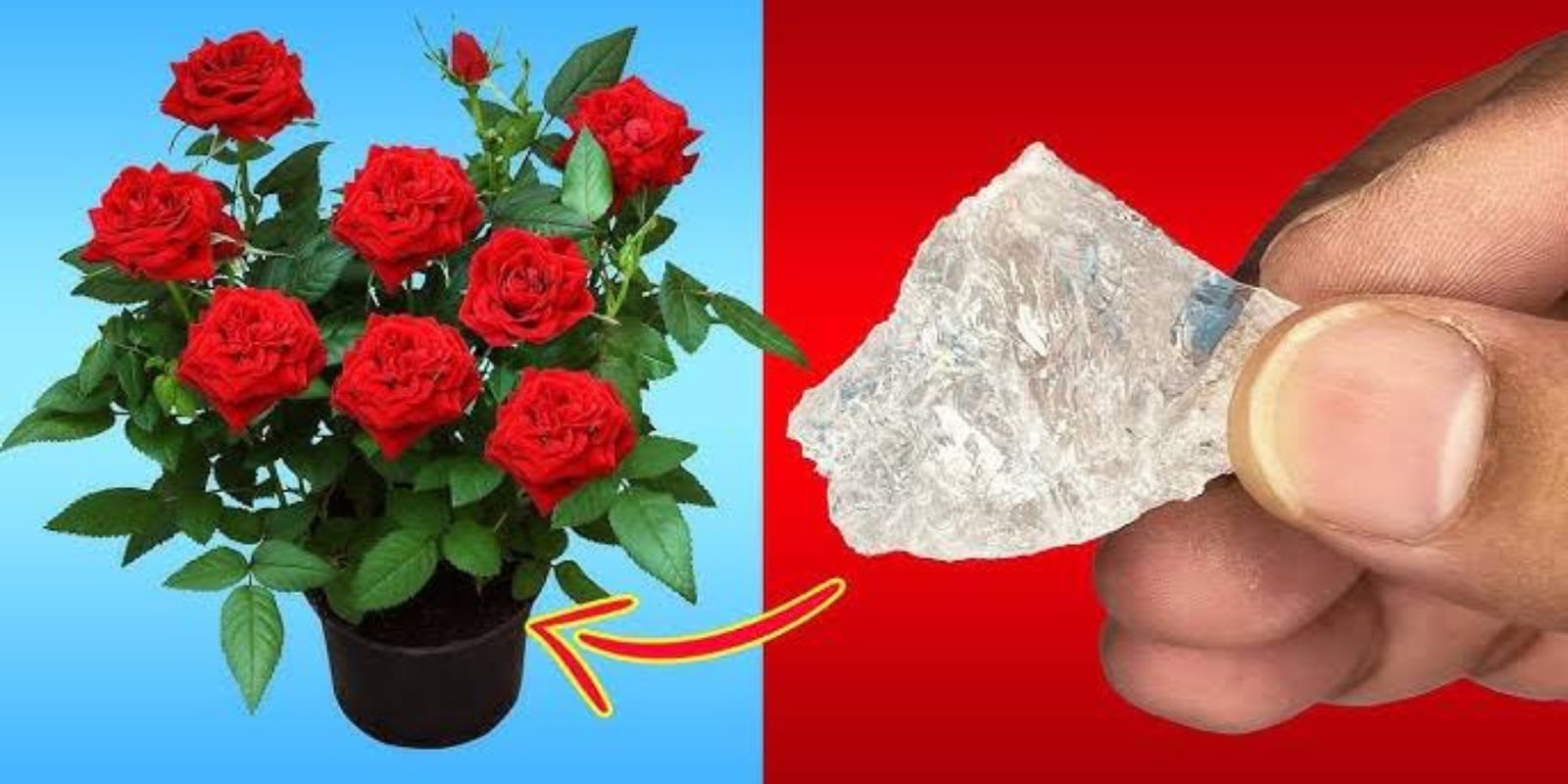Flowers bring life, color, and joy to any space, but sometimes they need an extra boost to thrive and bloom beautifully. One of the simplest and most affordable tricks for abundant and vibrant blooms is a common household ingredient—Epsom salt. This article explores the science behind this natural miracle worker, how to use it effectively, and why it works so well for flowers. Whether you’re a seasoned gardener or a beginner, these insights will help you achieve blooming success.
The Secret Ingredient: Epsom Salt
Epsom salt, also known as magnesium sulfate, is a natural compound made up of magnesium, sulfur, and oxygen. These minerals are essential for plant health, especially for promoting lush, green foliage and vibrant, long-lasting blooms. Here’s why Epsom salt is so effective:
- Magnesium: A key component of chlorophyll, magnesium helps plants absorb sunlight and convert it into energy for growth and flowering.
- Sulfur: Vital for protein and enzyme production, sulfur enhances the overall health of plants, making them more resistant to pests and diseases.
Why Flowers Need Epsom Salt
Flowers in pots or garden beds often face nutrient deficiencies, especially in magnesium, due to frequent watering, which washes away vital nutrients. Using Epsom salt as a supplement ensures your plants receive the magnesium and sulfur they need to bloom profusely.
- Improved Photosynthesis: Magnesium enhances chlorophyll production, allowing flowers to maximize energy for blooming.
- Better Nutrient Uptake: It improves the plant’s ability to absorb nitrogen and phosphorus, which are crucial for flower development.
- Stress Reduction: Epsom salt helps plants combat environmental stressors like drought, heat, or transplant shock.
How to Use Epsom Salt for Instant Blooms
1. For Potted Flowers
- Dissolve 1 teaspoon of Epsom salt in 1 liter of water.
- Use this solution to water your plants every two weeks.
- This method ensures consistent nutrient delivery without overwhelming the plant.
2. For Garden Flowers
- Mix 1 tablespoon of Epsom salt into a gallon of water.
- Spray this solution directly onto the leaves for quick absorption.
- Alternatively, sprinkle dry Epsom salt around the base of the plants and water thoroughly.
3. For Blooming Boost
- For plants that are struggling to bloom, use a slightly higher concentration: 2 tablespoons of Epsom salt per gallon of water, applied as a foliar spray.
Tips for Best Results
- Test Your Soil: Before applying Epsom salt, check your soil’s magnesium levels. Overuse can lead to an imbalance in nutrients.
- Timing is Key: Apply Epsom salt during the growing and flowering seasons for maximum effect. Avoid using it during dormancy.
- Combine with Fertilizers: While Epsom salt is excellent for magnesium and sulfur, it doesn’t replace other essential nutrients like nitrogen, phosphorus, and potassium. Use it alongside a balanced fertilizer for comprehensive care.
- Avoid Overwatering: Excess moisture can dilute the benefits of Epsom salt and lead to root rot. Ensure proper drainage for your plants.
Which Flowers Benefit the Most?
While Epsom salt works wonders for most flowers, certain varieties are particularly responsive:
- Roses: Epsom salt enhances color vibrancy, leaf health, and bloom size.
- Petunias: Encourages abundant flowering and healthier foliage.
- Hibiscus: Boosts blooming cycles and intensifies flower colors.
- Geraniums: Promotes fuller blooms and sturdy growth.
- Tomato Flowers: If you grow tomatoes for their flowers or fruit, Epsom salt helps reduce blossom-end rot and improves yield.
Why Epsom Salt Works Better Than Chemical Alternatives
Unlike synthetic fertilizers, Epsom salt is natural, non-toxic, and safe for humans, pets, and the environment. It doesn’t build up in the soil or harm beneficial organisms, making it a sustainable choice for home gardeners.
Common Myths and Misconceptions
- “More is Better”: Overusing Epsom salt can harm your plants by causing salt build-up. Stick to recommended doses.
- “It Works for All Plants”: While many plants benefit from magnesium, some, like succulents, thrive in low-nutrient soils and don’t need Epsom salt.
- “Immediate Results”: While Epsom salt can quickly improve leaf color and vigor, blooming may take a couple of weeks as the plant absorbs and utilizes the nutrients.
Success Stories from Gardeners
Many gardeners swear by Epsom salt for their flowers. A rose enthusiast from California shares:
“I started using Epsom salt on my roses two years ago, and the results are phenomenal! The blooms are bigger, brighter, and last longer than ever before.”
Similarly, an indoor plant lover from New York says:
“My petunias were struggling to bloom until I tried Epsom salt. Within a month, they were covered in flowers!”
Eco-Friendly Gardening with Epsom Salt
Using Epsom salt aligns with sustainable gardening practices:
- Zero Waste: Epsom salt is biodegradable and doesn’t harm the environment.
- Repurposing Household Items: You can mix Epsom salt with other natural ingredients like coffee grounds or banana peels for a DIY fertilizer.
- Affordable Solution: Compared to commercial fertilizers, Epsom salt is cost-effective and widely available.
Final Thoughts
Incorporating Epsom salt into your gardening routine is a simple yet effective way to promote abundant blooms and healthier plants. Its versatility, affordability, and eco-friendliness make it a must-have for every gardener. Whether you’re nurturing roses, petunias, or hibiscus, a pinch of this miracle ingredient can transform your flowers into a vibrant spectacle.
🌸 Try this natural bloom booster and share your results below! What’s your favorite gardening hack? Let’s grow together!
**#GardeningTips #EpsomSaltHacks #BloomBoost #PlantCare

